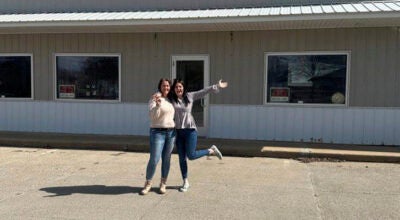Survey says: Austin wants a rec center
Published 10:01 pm Sunday, August 25, 2013
Vision 2020 beginning to shape plan for multi-million dollar athletic facility
A majority of Austin residents want a large-scale recreation center and they’re willing to pay for it.
That’s the findings of a feasibility study, which Vision 2020’s Community Recreation Center committee reviewed last week. The study, performed by Anderson, Niebuhr & Associates Inc. of the Twin Cities, found 58 percent of Austin and nearby residents would either definitely, probably or maybe join a new YMCA/rec center, 90 percent of current members would continue at an upgraded facility, and 41 percent of resident who wouldn’t join the Y would at some point use a pay-per-use portion of the rec center.
“I feel the data was a vote of confidence that there’s a community need for a rec center,” said Laura Helle, director of vision creation with Vision 2020. “But there’s still a lot of work to be done.”
The $54,000 study used in-depth phone interviews with 21 “influential community members,” a focus group of Hispanic families and parents with young children, and surveys with 100 current Austin YMCA members, 350 Austin residents and 50 Mower County residents near Austin. It was accurate within plus or minus 10 percentage points for YMCA members and plus or minus 5 percentage points for residents, and assumed a Y membership would be $45 monthly for individuals and $65 for families.
The rec center committee has more questions than answers at this point, but its members are pretty confident in the desire for an upgraded, year-round athletic facility.
“To me, what is really encouraging is in some communities they want services but they don’t want to pay for it,” Helle said. “Nobody has a crystal ball … but this is about as good as it gets as a vote of confidence to move forward.”
In June, Vision 2020 officials told the Mower County commissioners the theoretical rec center would cost about $25 million, with construction targeted for 2014 to 2016, but Helle said those are very rough figures.
The committee is tentatively planning to build three attached structures: a YMCA, and a community gathering area and fieldhouse for Y and non-Y members. Amenities would likely include an indoor pool, a gym, a running/walking track, exercise equipment, and exercise studios for fitness classes, among other services and programs.
Other popular features and programs from the study include an indoor water park, a warm water therapy pool, water aerobics or other water classes, an outdoor water park, a vortex pool, a sauna or whirlpool, bike trail access with equipment rentals, non-traditional sports leagues, court sports, a wellness clinic, community education classes, a rentable party room, a kitchen area, a meeting space, and acupuncture, massage and chiropractic services.
The scientific study took the percentage of respondents who said they would use the center, and scaling down the totals to “obtainable potential” members, it estimated that the Y/rec center would have 1,966 annual memberships, including 1,140 new memberships, and 709 households using the pay-per-use portion of the facility. That equals $1.45 million in revenue.
While it’s still unclear who would own the non-YMCA portion of the facility — Helle said it could be one of several partners, or a new non-profit could own and operate it — the group doesn’t want to open the facility with a lot of outstanding debt.
That means most of the construction cost would be paid for through grants, donations and a public fundraising campaign, according to Helle. She said while a lot of Vision 2020 groups a public fundraiser isn’t appropriate, for this one it is.
Helle said the rec center committee will rely on partnerships with key groups in town, especially the YMCA, the city of Austin Parks, Recreation and Forestry Department, Austin Public Schools, Hormel Foods Corp. and the Austin hospital. Helle said all five groups have had representatives at rec center committee meetings, and all plan to partner in some way.
The survey also analyzed the needs of the local Hispanic and non-Caucasian communities, and the desire for youth or senior services.
“We want to make sure that everyone in the community is served,” Helle said. “We made an effort to focus on diverse families in the study, and we’re really glad we have that data.”
The survey found 30 percent of respondents were interested in senior programming, and 37 percent wanted youth and teen services — numbers the researchers say roughly correlate to the amount of Austin residents in those subsets. It also found many interests were similar among all respondents, but the following services and programs were more popular with minorities: youth services, an indoor water park, a kitchen area, a multi-purpose fieldhouse, non-traditional sports leagues and martial arts classes.
By the numbers
A glance at the key findings of a recreation center feasibility study
Interest in rec center percentages
—27% Austin and area residents probably or definitely would join a new YMCA/rec center
—31% Residents maybe would join
—84% YMCA members probably or definitely would continue at an upgraded facility
—6% Y members maybe would continue
—26% Residents wouldn’t join but would use the pay-per-use portion of the rec center at least once a month
—15% Wouldn’t join but would use it less than once per month
Percentages converted to membership totals (scaled down to “obtainable potential”)
—1,140 Added memberships with an upgraded facility
—826 Continued memberships
—709 Households using the pay-per-use portion
—$1.45 million Estimated annual revenue
*Study performed by Anderson, Niebuhr & Associates Inc. of the Twin Cities. Accurate within plus or minus 10 percentage points for YMCA members and plus or minus 5 percentage points for residents.





